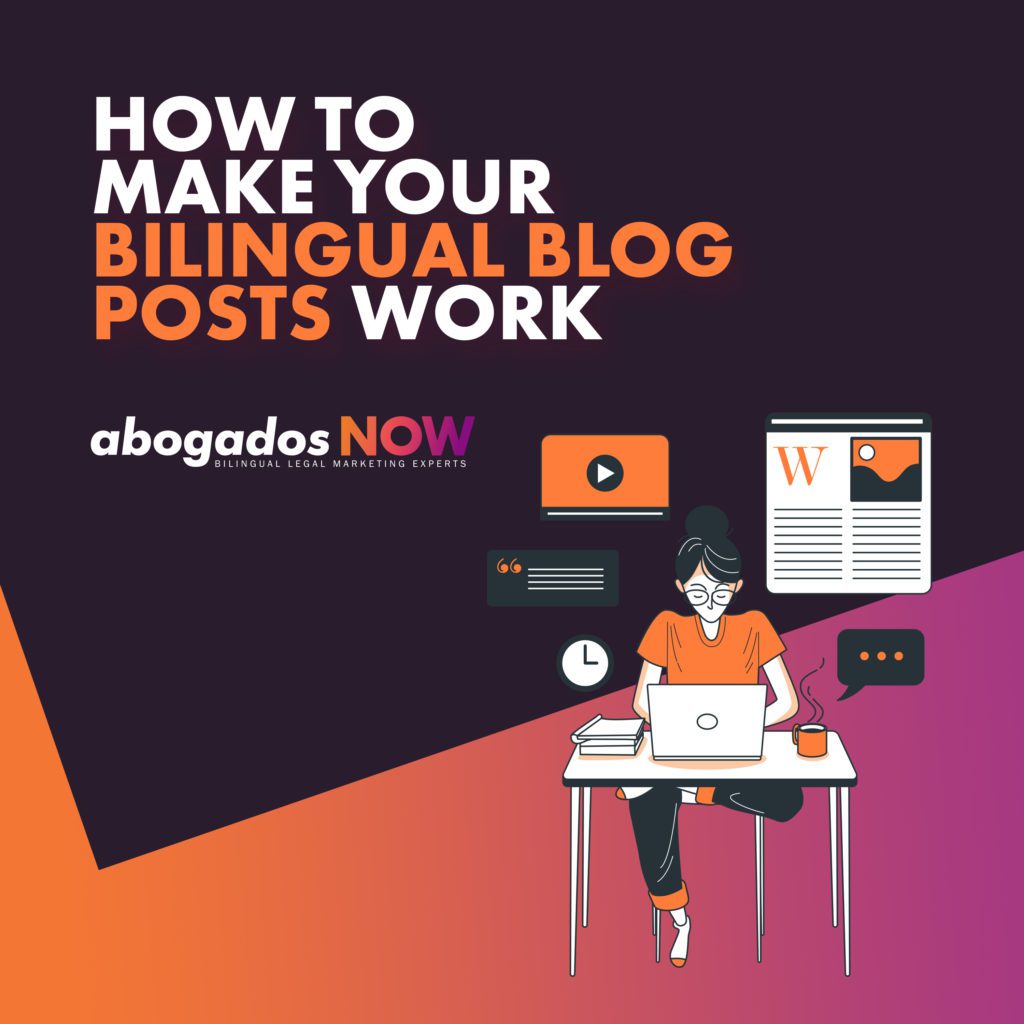Running a bilingual law firm comes with serious benefits. You have many clients, from diverse backgrounds. You’re often making a difference, serving marginalized communities. And, of course, there’s the benefit that you have a specialized legal service that a large number of people need.
However, providing service to bilingual clients also comes with its own unique challenges. One of these is how difficult it can be to reach each specific audience through the content you create.
After all, there are tons of content writing strategies out there to help out people creating content in English—but what about content in English and Spanish?
Well, fortunately, we’ve got you covered. In this article, we’ll review how you can make your bilingual legal blog posts work so that your bilingual clients enjoy them- sí o sí. (That’s Spanish for, “No matter what.”) Read on to learn more.
Understand Your Clients
Before you start writing your content, you need to understand your clients. After all, you don’t start defending your clients in the courtroom without having met them or reading the legal brief, right? If you did, then you’d probably start losing your cases pretty quickly.
In the same way, it’s important to understand your clients when creating bilingual content. This way, they’ll be more likely to find your blog posts and be interested in the services you offer.
How do you do this? Use market research and analytics tools to understand your clients’:
- Social media habits
- Schedules
- Locations
- Ages
- Genders
- Cultural preferences
- Linguistic preferences
Once you have this information, you can create a buyer persona to write your content for.
However, remember this! You might have to create more than one persona. This is because sometimes different groups of people will have different needs and motivations, which will impact the content you create.
For example, your bilingual clients who are first-generation immigrants might be interested in different content than what might interest their children, who are younger and have different concerns.
In this case, you would create a separate buyer persona for each.
Don’t Use Only Machine Translations
While machine translations will make it easier for you to translate your content from English to Spanish, they aren’t always entirely reliable. Sure, you can use always use machine translations as a starting point—but you should have a fluent Spanish speaker review the content afterward.
Otherwise, something might get lost in translation. And when it comes to something like legal advice, this could end up having serious consequences. So it’s best to be extra careful and have someone review your text.
Another option is to have a Spanish speaker translate the text in the first place. The best option? Hiring a bilingual Spanish copywriter to write the content in the first place!
This way, you won’t have to hire someone to proofread your translation or end up with wonky sentences that have an awkward nuance or flow to them.
Whatever you end up choosing to do, remember to review all your content right before it gets published. Mistakes, especially obvious ones, can look unprofessional and turn off potential clients.
Make Your Content Culturally Appropriate
Another reason to have a native Spanish speaker review your work is to ensure that it’s culturally appropriate. Something that’s funny in English might be completely offensive when translated into Spanish. And the last thing anyone wants is to end up #canceled.
But it’s not just about not offending potential clients. You can also connect more closely to them if you’re aware of what matters to them in terms of culture. This applies to both historical culture and current culture, and anything in-between.
For example, if you create content about a legal case the bilingual community is interested in, you could end up being seen as an authoritative commentator in their eyes. They’ll also see you as invested in their community, in their lives.
Other cultural contexts to be aware of include communication style, which can vary from language to language, and mentioning holidays or other important milestones the bilingual community you cater to celebrates. You could even have an entire series of content that’s released on specific important dates.
And, of course, don’t forget to include keywords popular among bilinguals in your content—which might be quite different than those popular among the English-speaking population.
More Reach, More Clients
Now that you’ve learned how to make your bilingual blog posts work, you’ll reach more of your bilingual clients. Over time, you’ll have more clients, both those who speak English, Spanish, and both. Can we get an Olé?
What other strategies do you use to share your blog posts with your bilingual clients?



